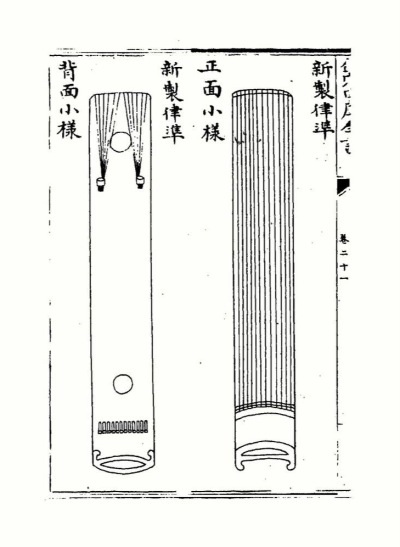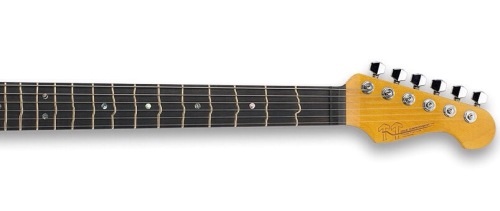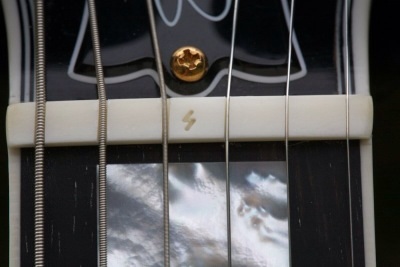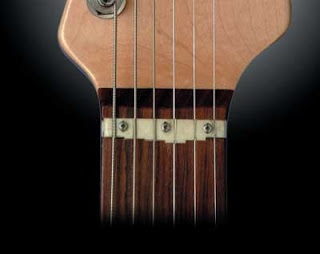Equal Temperament (dividing the octave into twelve equally spaced notes) was invented by a Chinese prince named Zhu Zaiyu in 1580.
He built this instrument with 12 strings to use to tune the other instruments in the Imperial Orchestra. This is the world's first tuner:

Here are some various methods of solving the shortcomings of equal temperament.
TrueTemperament.com 
That G string really jumps out at you, doesn't it? In fact, Jimmy Johnson was just talking about a dead spot on the G string. There ya go. A picture is worth ...
Buzz Feiten's tuning system relies on a shelved nut to compensate for the weirdness in the G and B strings (it really wasn't until
Anders Thidell created the True Temperament fingerboard that we could see how out of whack frets actually are):
 Earvana
Earvana uses a similar approach:

A homemade solution:

Personally, I think the best solution would be a combination of True Temperament's wiggly frets and Novax slanted frets:

Lastly, I'd like to quote a section from the
True Temperament FAQ:
quote:What?s wrong with straight frets?
Standard equal tempered fret spacing is calculated from one single piece of information about the instrument ? the scale length. ... A divisor constant is used to determine the locations of the frets. The scale length divided by the constant gives the position of the first fret. The remaining length after subtracting the first fret, divided by the same constant, gives the position of the second fret, and so on.
The divisor used by all but a vanishingly small percentage of modern guitar builders is 17.817152, a figure arrived at by way of the logarithmic function ?the 12th root of 2″ (1.0594631). This results in precise mathematical fret spacing with the 12th fret at the exact centre of the calculated scale length. If the calculation is repeated for 24 frets, the distance from the 24th fret to the theoretical bridge saddle position will be exactly one-fourth of the calculated scale length. ...
But this mathematical model is a gross oversimplification. It ignores virtually every physical parameter which governs the behaviour of vibrating strings, except one ? speaking length. Tension and mass are not even considered.
The model assumes an ?ideal? or ?perfect? string ? one which only exists in theory, not in the real world. It assumes, firstly, that the strings have no stiffness. Secondly, it assumes that all strings behave identically, regardless of their thickness, whether they are plain or wound, and the material they are made of. Thirdly, it assumes zero string height ? and completely ignores what happens when the strings are pressed down on the frets!
The frequency of a vibrating string is determined by three factors: the speaking length, its mass, and the tension applied. All three of these factors are affected to varying degrees when a string is pressed down on a fret. Along the neck, the length and mass decrease by 50% per octave. Changing the length affects the stiffness. The tension is affected by fretting the string, as the string height is not zero. Pressing the string to the fret stretches the string slightly, increasing the tension and thus sharpening the notes produced.
The strings themselves vary considerably in diameter and construction (plain or wound), and thus react differently to being fretted. One single adjustment per string at the bridge (?intonation?) cannot possibly fully compensate for all these parameters at once, as they all vary in different degrees on different strings.
The only way to fully compensate for all these parameters is to adjust each and every string-to-fret contact point on the fingerboard separately, until each and every note plays the target frequency exactly. This, which is impossible on a guitar with traditional, one-piece, straight frets ...